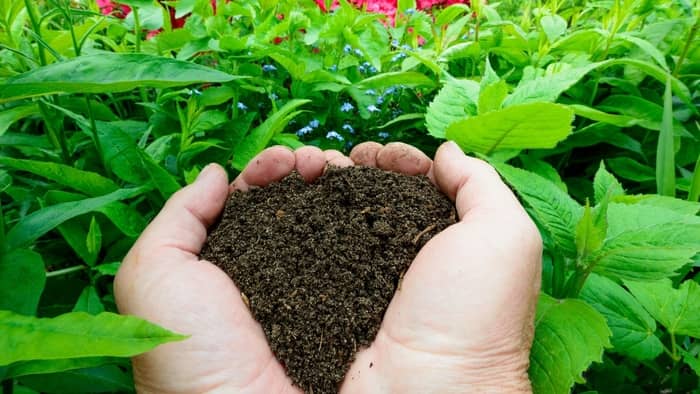Last Updated on April 29, 2022 by Marco C.
Do you know how to increase brix levels in plants? Do you know what brix levels means? This article has all your answers to these important questions.
It is always important for you to understand plant chemistry when setting up an aquaponics system. If you have a good knowledge of plants, you will know what you need to do in order to have a successful system.
So, have you ever heard of the brix level of plants? It is a great way to determine the vitality of your produce. According to the University of Missouri, “Brix is a measurement of the mass ratio of soluble solid (mostly sugar) to water in a liquid.” Basically, it indicates how much sugar is in your plant.
Why is it important? And how does it affect your plant’s growth? A plant needs to perform photosynthesis in order to grow. They use the power from the sun to create sugars, which is consumed by the plant for energy.
If your plant has a low sugar level, something about the plant’s actions are off. Often a plant that has a low brix level is not taking up the proper nutrition from the soil.
When you notice a problem in your plants, you can measure the brix levels. So, how to increase brix levels in plants? We will answer you in this article. Don’t stop reading to learn more about this useful skill!
Understanding A Low Brix Level In Your Plants
A plant with a low brix level is likely to look wilted and less vital overall. This is because it does not have enough sugar content to support the internal cell membranes of a plant.
Plants with a low brix level are more susceptible to attacks by outside things. These could be bacteria, fungi, or insects. These plants simply do not have enough resources to fight off diseases or difficult conditions.
So overall, when you have a low brix level, it is not a good sign. Your plants could quickly die if they face any sort of difficulty.
On average, a plant should have a brix level of above 12% to be able to withstand disease and other threats.
Another important thing to know is that plants with a higher brix level produce healthier fruit. The produce from these plants contains higher nutritional content.
Overall, organic produce has higher brix levels than plants grown with chemicals. This is one reason why it’s healthier to eat organic produce vs conventional.
How do you measure your brix level? Lucky for us, humans have invented a refractometer tool that allows you to measure brix levels. In order to do this, you have to squeeze out the juice from your vegetables.
You then use the refractometer to measure the presence of sugar when the juice is under the light. If your plant does not have fruit yet, you can simply squeeze a leaf into your refractometer.
As a plant grows, its brix levels start to grow. When the brix level of a plant is between 8-11, it is still susceptible to insects. Once it reaches 12 and above, insects are no longer attracted to it as food.
This is because the plant has become strong enough to resist the insects.
Read more about: Mobile vs Immobile Nutrients In Plants-All You Need To Know!
Is The Brix Level Affected By Temperature?
One important thing to know is that you will get different Brix temperatures when you are in a cold environment versus a hot one. If you read your brix level in a cold temperature it will appear higher than it really is.
So be sure to read your brix level at room temperature. This is between 68-77 degrees Fahrenheit.
A plant will never exceed a brix level of 38. So what if you have a plant with a brix level? We will now teach you how to increase brix levels in plants.
One of the fastest ways to increase brix levels in plants is to add organic compost. The more nutrients your plant receives, the better its ability is to take up water and nutrients from the soil.
Learn more about: The Shocking Facts About Hydroponic Growing Medium Alternatives
It is always good to understand the nutrient breakdown of your compost. Plants need three macronutrients to survive. These are N (nitrogen), P (Phosphorous), and K (Potassium).
Often when a plant is giving a low brix reading, people try to increase the potassium while lowering the nitrogen. This is because too much nitrogen can actually limit the plants’ ability to take in nutrients.
You can try to use some natural sources of Potassium such as dried banana peels or wood ash. As you make these amendments, continue to take Brix measurements until you reach an ideal condition of over 12%.
Hopefully, you now know how to increase brix levels in plants. Just pay attention and always observe your plants. If you notice wilted leaves, measure the brix level. Feel free to comment and ask questions below!
FAQs
What does a low brix mean?
A low brix indicates that your plant is not taking up the proper nutrition from your soil. It may mean that you need to add more nutrients to your soil. One way to do this is to add organic fertilizer to your system. Always be sure to understand the nutritional breakdown and the source of your compost. This will help you diagnose future problems that may arise.
Does Brix change with temperature?
Yes, the brix level is affected by the temperature at which it is measured. If you have a cold room, you will typically get higher brix readings. This is inaccurate. Make sure to measure at a room temperature which is between 68 - 77 degrees fahrenheit.
What does brix do for plants?
Brix is the amount of sugars present in the cells of your plant. Sugars are used to create a strong internal structure. When your plant has a high enough brix level, it is less susceptible to insect attacks, drought, and other stresses. Also, once your plant reaches a brix level of over 12%, insects are not as attracted to it.
What is brix level?
Brix level is the measurement of how much sugar sap is present in the juice of a plant. This could be measured from the leaves, stem or fruit of the plant.

Candace is an aquaponics expert with over 5 years of experience in the field. She has a degree in environmental science from the University of California, Berkeley and a degree in aquaponics from the University of Florida. She is passionate about sustainable agriculture and has a deep knowledge of aquaculture and hydroponics. She has worked on numerous projects and has been involved in the development of aquaponic systems and fish farms. She also has experience in designing and constructing aquaponic systems. With her expertise, Candace is able to advise clients on the most effective and efficient way to construct and manage their aquaponic system. She is an active member of the aquaponic community, often speaking at conferences and seminars. Candace is dedicated to helping others understand the importance of aquaponics, and she is a strong advocate for sustainable food production.

